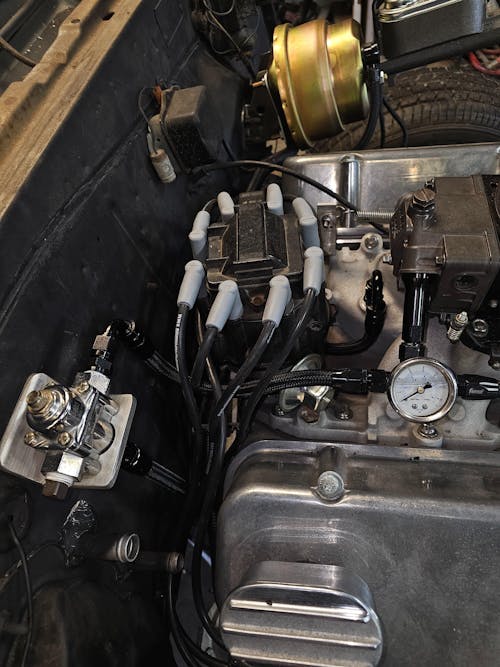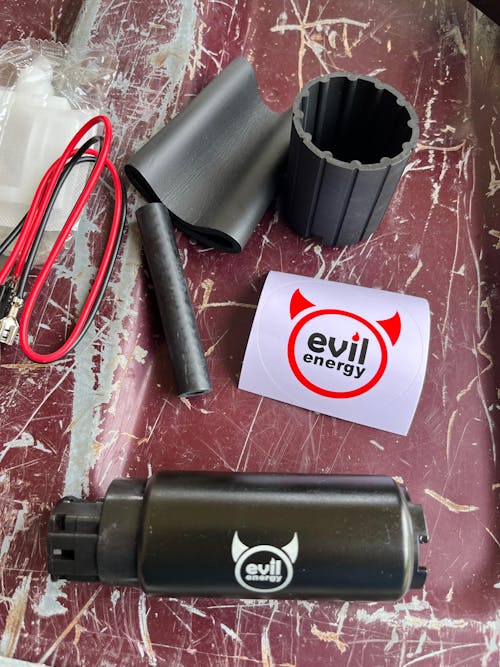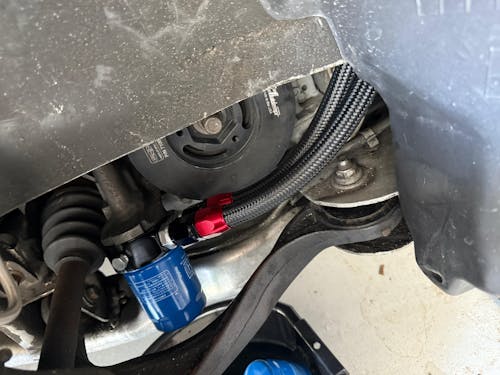650 CFM vs 750 CFM Carburetor: Why Bigger Isn't Always Better
Introduction: The Performance Builder's Biggest Dilemma
'Should I get a 650 or a 750?' It's a question asked countless times in auto forums, at car meets, and in speed shops. Many newcomers to V8 engine modification hold a common myth: that a bigger CFM (Cubic Feet per Minute) rating equals more horsepower.
However, the reality is this: choosing a carburetor that is too large—like putting a 750 CFM Carb on a mild street engine—is one of the most common and costly mistakes a builder can make. It often won't give you more power, and it will almost certainly 'kill' your vehicle's street-level drivability.
This article will dive deep into the 650 CFM Carb vs. 750 CFM Carb debate. We will use simple physics and a clear list of symptoms to help you decide which carburetor is truly right for your V8 engine, and why a 650 Carburetor is so often the smarter choice for the street.
Understanding the Core Principle: CFM vs. Air Velocity
First, CFM (Cubic Feet per Minute) is not a direct unit of horsepower. It is simply a rating of the maximum volume of air a carburetor can flow at a specific vacuum. Your engine, especially at low-to-mid RPMs, relies far more on air velocity (how fast the air is moving) than on pure air volume.
Here is the classic 'straw analogy':
-
750 CFM Carb (Too Big): Imagine trying to sip a thick milkshake through a very wide straw (like a 1-inch diameter pipe). You would have to suck incredibly hard (representing high engine RPM) to get anything. At low sipping speed (low engine RPM), the velocity is too slow, and you get nothing. This is how an oversized 750 CFM Carb behaves at low speeds.

-
650 CFM Carb(Just Right): Now, picture using a properly sized straw. With just a gentle sip (low RPM), you instantly create high velocity, which easily pulls the milkshake (fuel) up. This is why a correctly sized 650 CFM Carb provides a crisp, instant throttle response.

The takeaway: Your engine needs high air velocity at low RPM to properly atomize (turn into a mist) the fuel. A carburetor that is too large, like a 750 CFM on a small engine, makes the air move slowly through its venturis, leading to poor fuel atomization.
Symptoms of 'Too Big': What Happens When You Use a 750 CFM Carb Incorrectly
If you install a 750 CFM Carb on an engine that is too small or doesn't spin to a high-enough RPM, you will immediately encounter these points:
-
Symptom 1: Low-speed stumble or 'Bogging' is the most obvious sign. You stomp on the gas at a low RPM (like 2000 RPM), and the engine 'coughs' or hesitates for a second before finally accelerating. This is because the slow-moving air cannot pull and atomize fuel quickly enough to match the sudden throttle opening.

-
Symptom 2: Poor Throttle Response-In city driving, the throttle pedal will feel 'mushy' or 'soft.' You'll lack that 'connected' feeling to the engine. Your car will feel sluggish and lazy, not snappy and responsive.

-
Symptom 3: Terrible Fuel Economy-Slow air velocity causes poor atomization. This means large droplets of fuel are not burned efficiently. They simply condense in the intake manifold, wasting gas and often creating a rich-running condition (you'll smell raw fuel).

-
Symptom 4: A Tuning Nightmare-You may try to fix these issues by adjusting mixture screws or changing jets. But you can never tune your way out of a carburetor that is physically too large. The problem is physics—it's a lack of velocity, not an incorrect setting.

Advantages of 'Just Right': The 650 CFM Carb Shines
Now, let's look at what happens when you choose the 'just right' carburetor. For the vast majority of 302, 350, or 383 c.i. street V8 engines, a 650 Carburetor is the perfect partner.
-
Advantage 1: Extremely Crisp Throttle Response-This is the single biggest benefit of a properly sized 650 CFM. Because air velocity is high, the second you touch the throttle, fuel is atomized and pulled into the engine. The power is instant.
-
Advantage 2: Strong Low-End and Mid-Range Torque-High velocity creates powerful torque in the 2000-4500 RPM range, which is where street cars spend 90% of their time. Your car will feel punchy and strong when accelerating from a stoplight.
-
Advantage 3: Better Fuel Efficiency-Proper atomization means every drop of fuel is burned for power, not wasted out the tailpipe as black smoke.
-
Advantage 4: Easy to Tune-When a 650 Carburetor is operating in its designed 'sweet spot,' it becomes simple and responsive to fine-tuning adjustments.
Comparison Chart: 650 CFM vs 750 CFM at a Glance
| Feature | 650 CFM Carb (e.g., Evil Energy) | 750 CFM Carb |
| Best For Engine Size | 302, 350, 383 c.i. (Small/Medium V8s) | 400, 454 c.i. (Big Block V8s) |
| Best For RPM Range | Idle - 6500 RPM | 3500 - 7500+ RPM |
| Throttle Response | Excellent (Crisp) | Poor to Fair (Mushy) |
| Low-End Torque | Strong | Weak |
| Fuel Economy | Good | Poor |
| Primary Use | Street, Daily Driving, Performance Cruise | Drag Racing, High-RPM Race Engines |
Conclusion: Be Honest About Your Build
When choosing between a 650 Carburetor and a 750 CFM model, you must be honest about your engine's intended use.
-
Ask yourself this question: 'Will my car spend 90% of its time on the street, or 90% of its time on the racetrack?'
-
For the 90% (Street Warriors): If you are like the 90% of builders with a street-driven car, even a high-performance one with a 350/383 engine, the 650 CFM Carb is the correct choice. It will give you the driving pleasure you actually want: instant response and powerful mid-range punch.
-
For the 10% (Racers): If you have a 454 Big Block, or a purpose-built 383 stroker that lives at 8000 RPM, then a 750 CFM carburetor is your starting point.
FAQs about 650 CFM vs 750 CFM Carburetor
Q1: What is the main difference between a 650 CFM and a 750 CFM carburetor?
A1: The main difference is their maximum airflow capacity. A 750 CFM carburetor is designed to flow more air than a 650 CFM model, which is typically suitable for larger displacement or higher-RPM engines. Conversely, a 650 CFM design often has smaller venturis, which helps maintain higher air velocity on smaller engines, improving throttle response and low-end torque.
Q2: Can I put a 750 CFM carburetor on my 350 engine?
A2: You can, but it's generally not a good idea unless your 350 engine is heavily modified (e.g., race cam, high-flow heads, single-plane intake manifold) and operates frequently at high RPM (like 6500+ RPM). For most stock or mildly modified street-driven 350 engines, a 600 CFM to 650 CFM carburetor will provide much better overall performance and drivability.
Q3: What are the specific symptoms of being 'over-carbed'?
A3: Typical symptoms include: engine hesitation or 'bogging' when you hit the gas; an unstable or overly rich idle (you might smell raw fuel); spark plugs that easily become fouled and black; a feeling of weakness at low RPM (poor low-end torque); and difficulty tuning for a smooth power delivery under various driving conditions.
Q4: Will a 650 CFM carburetor restrict my engine's horsepower?
A4: It will only be a restriction if your engine truly needs more air than 650 CFM can provide. A common rule of thumb is that a 650 CFM carb is sufficient to support up to 400-450 horsepower (in a street application). If your engine combination (displacement, cam, heads, etc.) is designed for 500+ horsepower and can breathe at high RPM, then 650 CFM could be a bottleneck, and a 750 CFM would be a more appropriate choice.
Q5: How should I choose the correct CFM for my engine?
A5: The best way is to honestly assess your engine combination and your primary use. Consider these factors: engine displacement (CID), your expected maximum RPM (Max RPM), and your engine's volumetric efficiency (VE%). There is a simple formula for reference: CFM = (CID x Max RPM x VE%) / 3456 For a street engine, VE% is typically around 80-85%. For a high-performance engine, it might be 90-95% or higher. For example, a 350 engine with a max RPM of 5500 and 85% VE: CFM = (350 x 5500 x 0.85) / 3456 ≈ 473 CFM This shows that for this mild 350 engine, even 650 CFM is more than enough, and 750 CFM would be definitely too large.
About EVIL ENERGY Carburetor
EVIL ENERGY's mission is simple: to break the convention of the high-performance auto parts market being dominated by a few high-priced brands. We firmly believe that excellent performance should not come with a hefty brand premium. But we know that choosing the right EVIL ENERGY Carburetor is more than just buying a part; it's a critical decision. You might be asking: 'How Does a Carburetor Work?' 'How to Choose the Best Carburetor for Your Engine?' or 'How to Choose the Right Carburetor for a Chevy 350 (SBC) Engine?' This is what makes EVIL ENERGY different. We don't just offer carburetors with performance that rivals competitors at a more competitive price; we are your knowledge resource. Are you debating 'Holley VS EVIL ENERGY'? We have the comparison. Need to know 'How to Install a Carburetor?' We have the full tutorial. Our entire EVIL ENERGY Carburetor is 100% brand new (never rebuilt), Engineered for High Performance, and Ready for Easy Installation (Factory Replacement Ready). It's time to stop paying a premium for an old logo. When you choose EVIL ENERGY, you're not just getting a high-value, brand-new EVIL ENERGY Carburetor; you're getting the complete tutorials and support needed to finish your project.
-
Website: https://www.ievilenergy.com/
-
TikTok: @evil_energy_autoparts
-
YouTube: @ievilenergy
-
Instagram: @evil_energy_autoparts
-
Facebook: EvilEnergyRacing
-
Contact Us: support@evilenergy.com



![[20FT] EVIL ENERGY PTFE Fuel Line Kit, complete black hose & fittings set, 180-day return](http://www.ievilenergy.com/cdn/shop/files/Test-2025-Evilenergy-125598065_165x.png?v=1742144807)
![[16FT] EVIL ENERGY PTFE Fuel Line Kit, black braided hose, fittings, free shipping & return](http://www.ievilenergy.com/cdn/shop/files/Test-2025-Evilenergy-125598171_165x.png?v=1742144807)
![CPE Fuel Line[25FT]](http://www.ievilenergy.com/cdn/shop/files/25FTCPE_FuelLine_165x.png?v=1735220649)
![CPE Fuel Line[20FT]](http://www.ievilenergy.com/cdn/shop/files/20FTCPE_FuelLine_165x.png?v=1735220649)






















